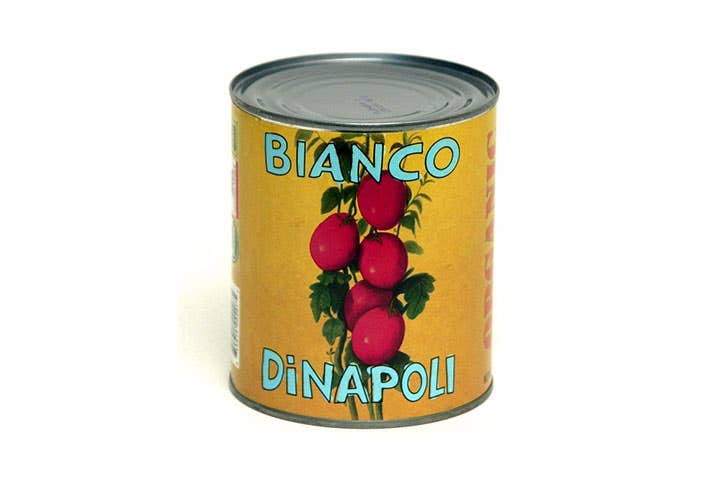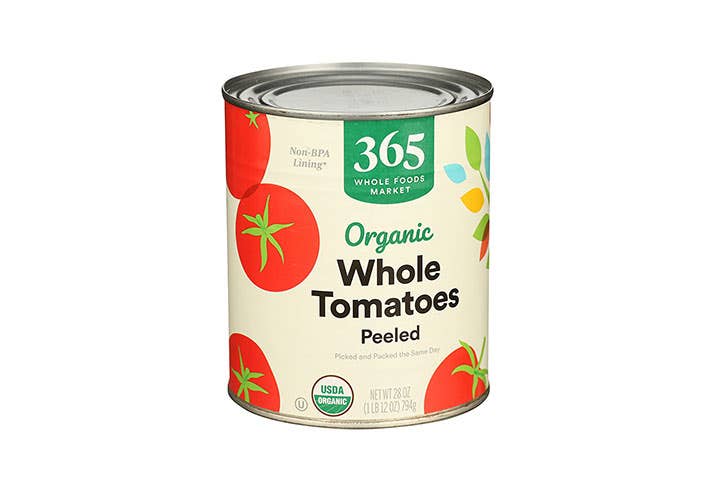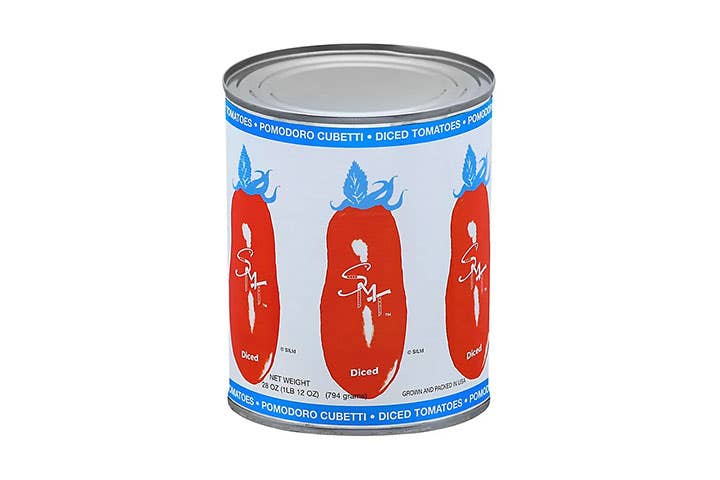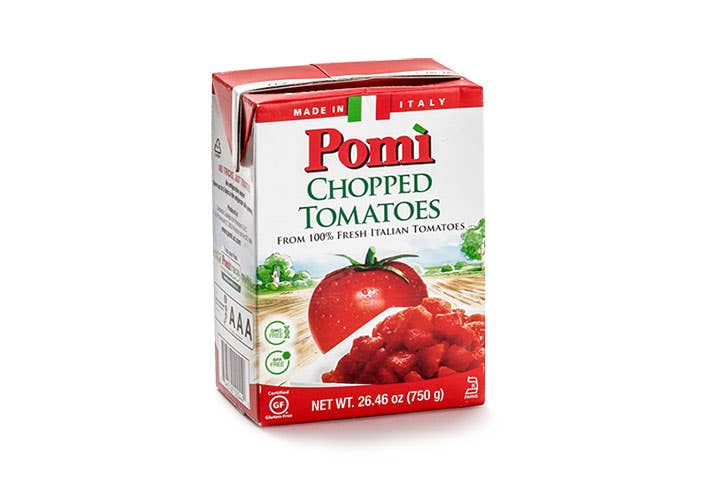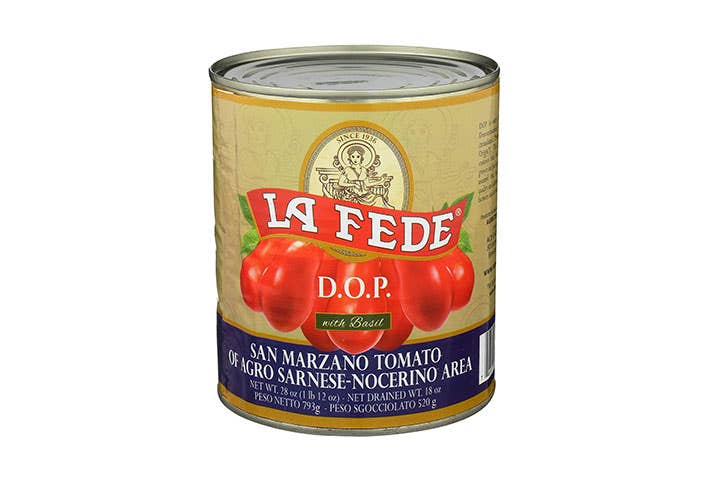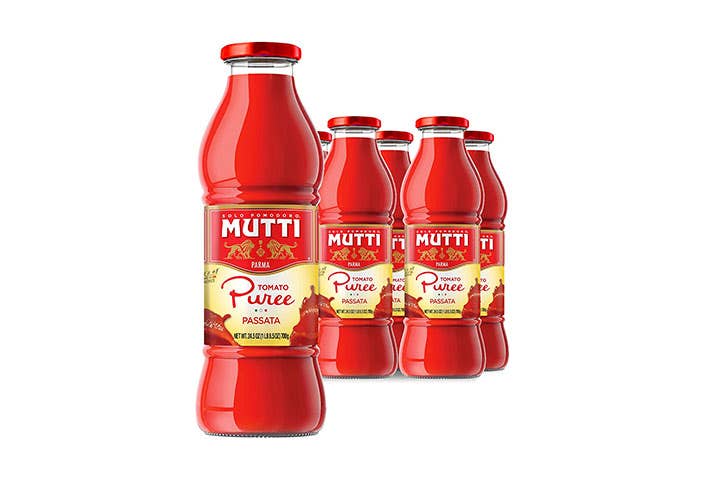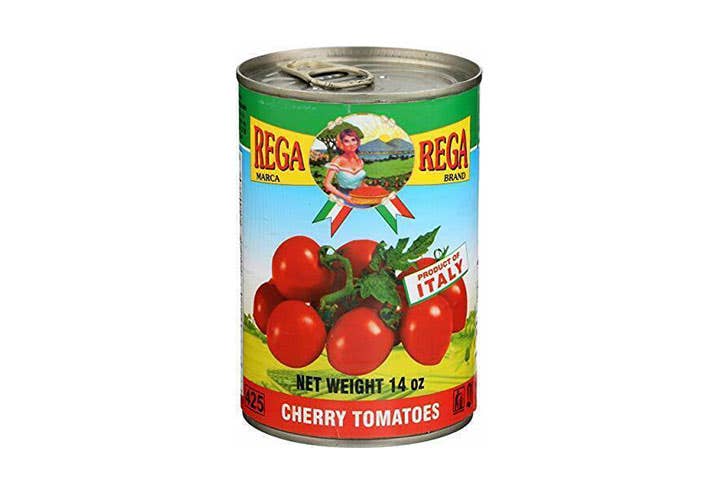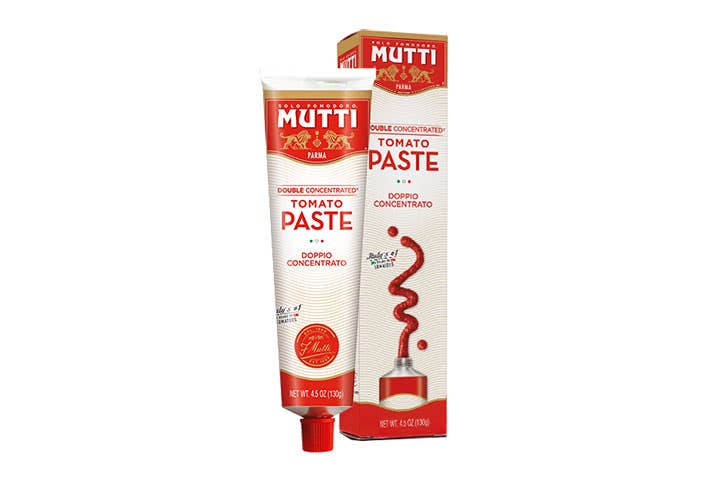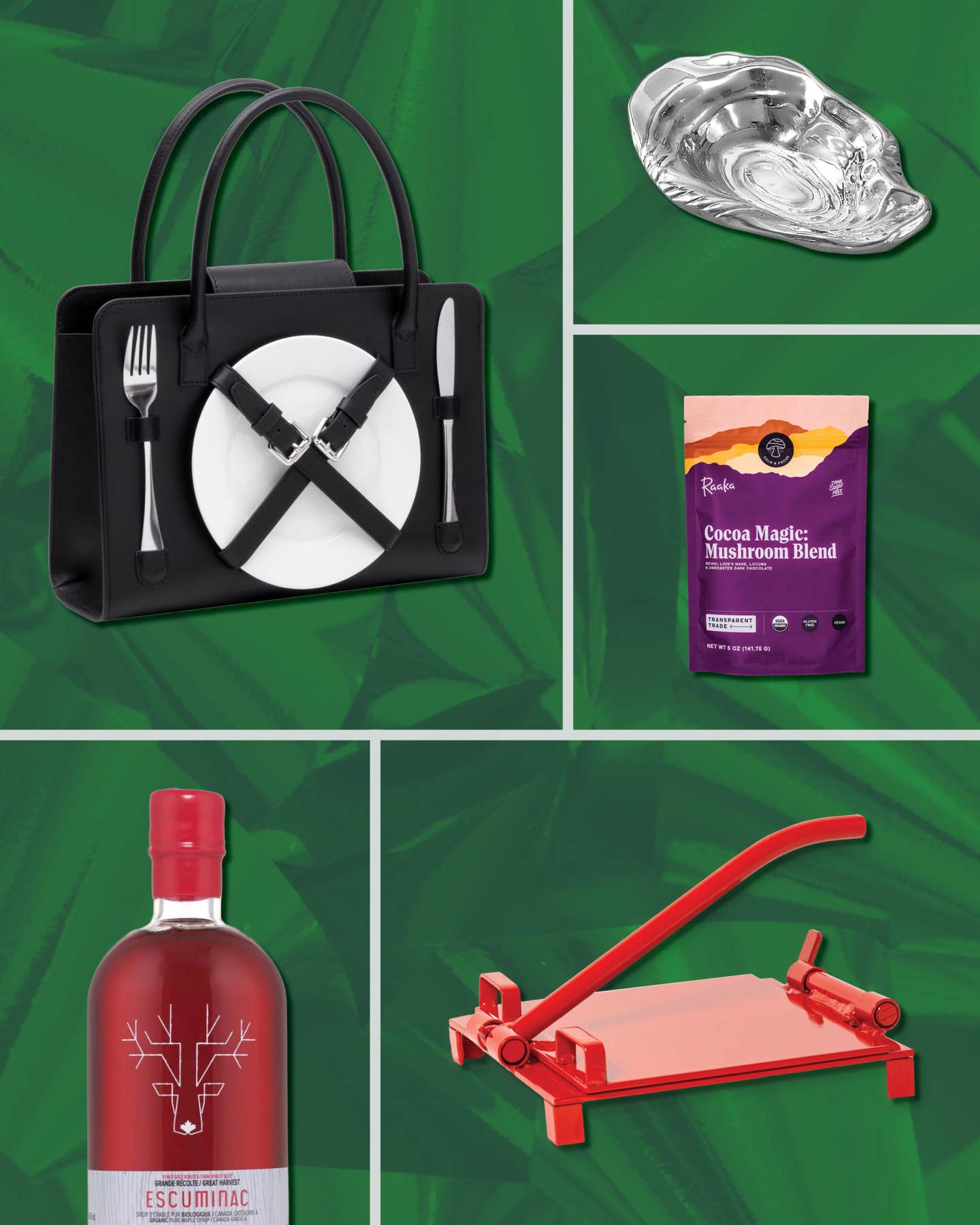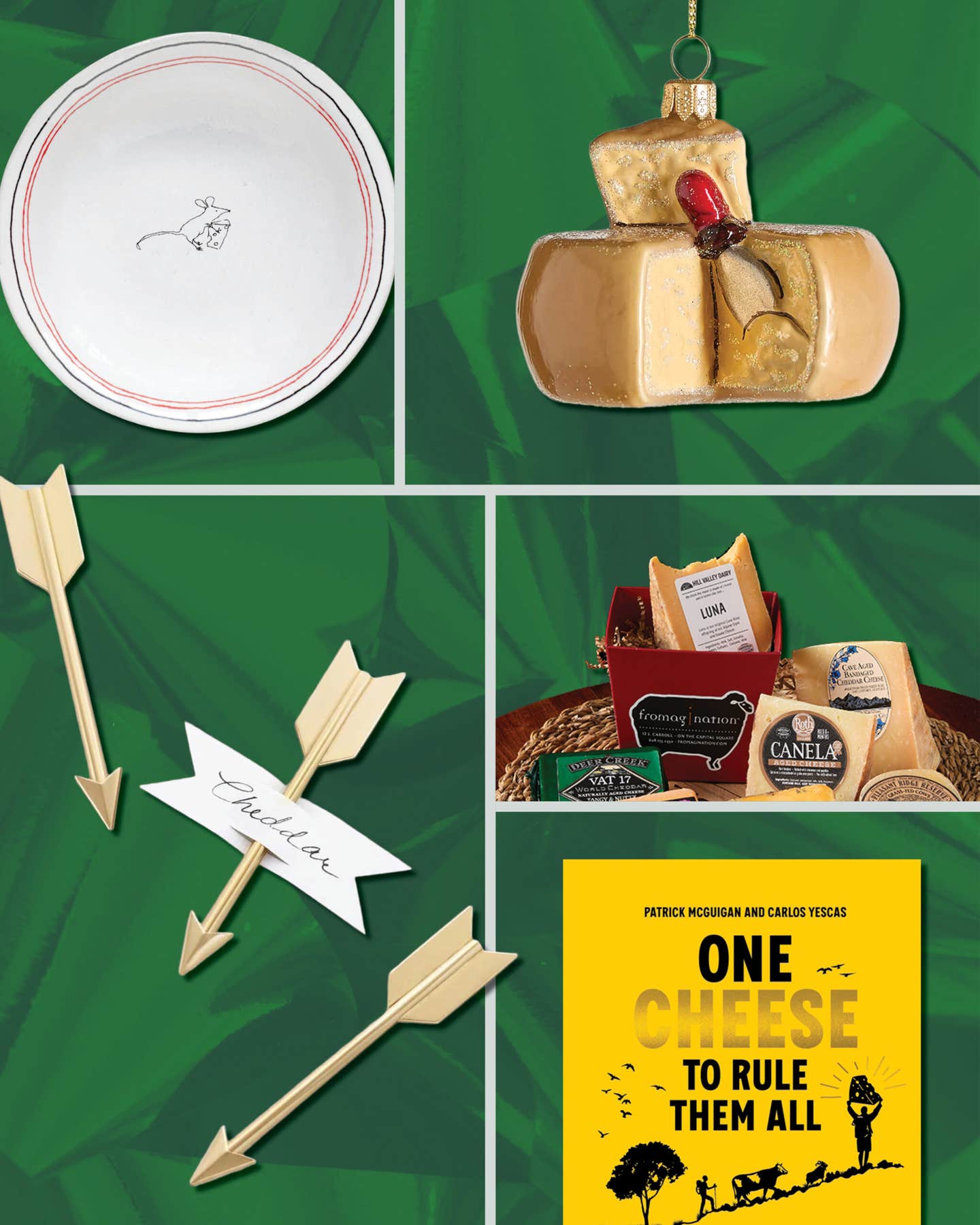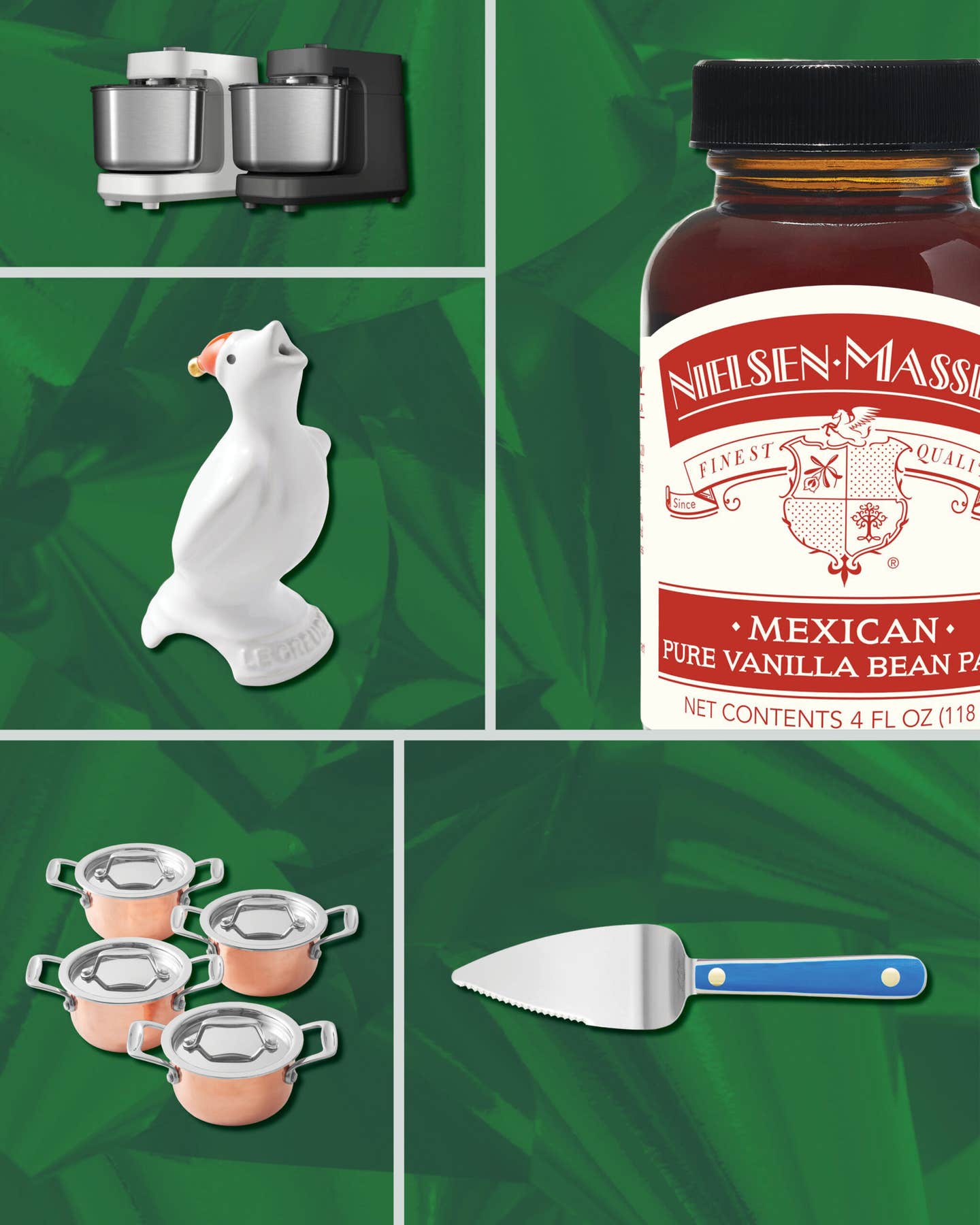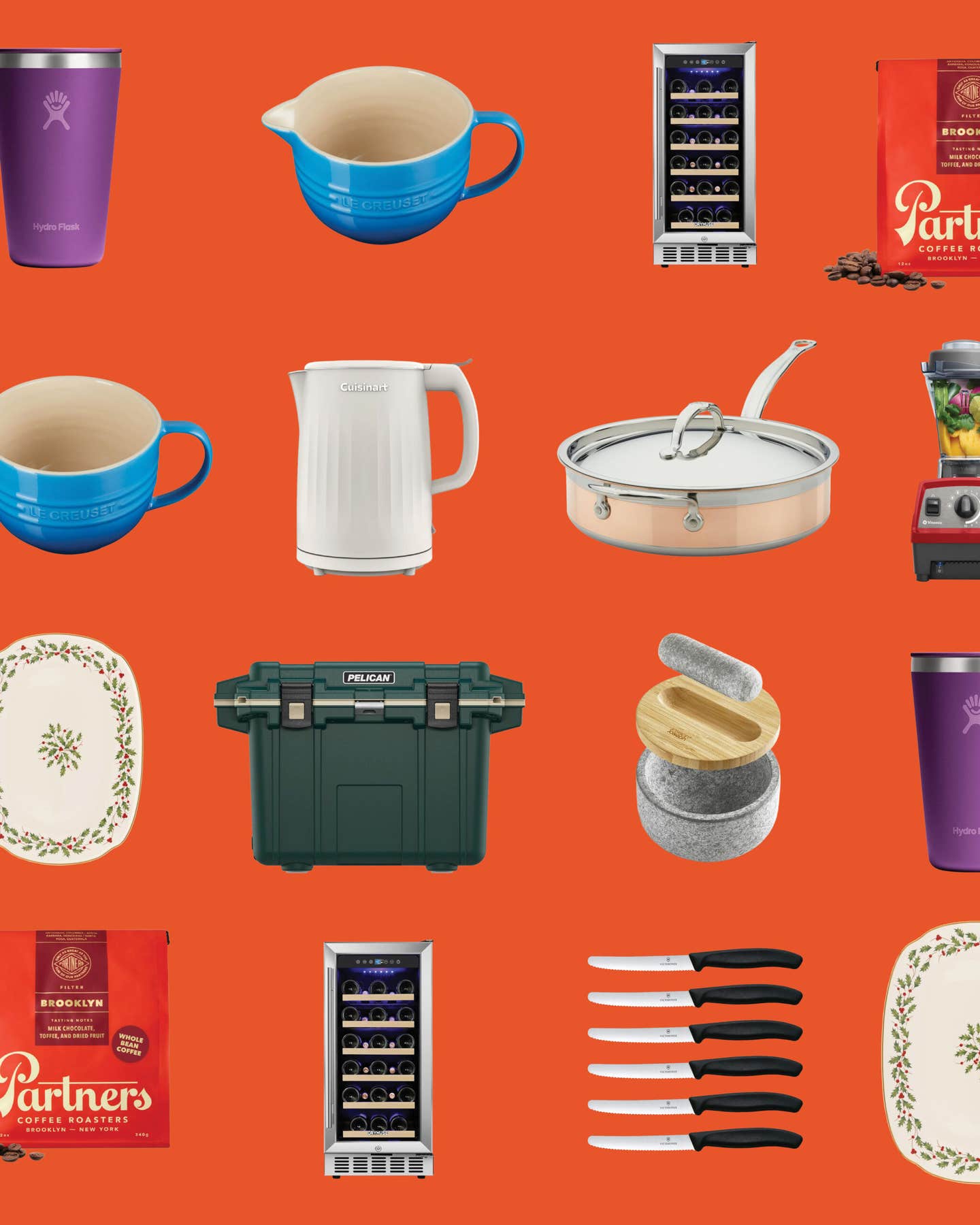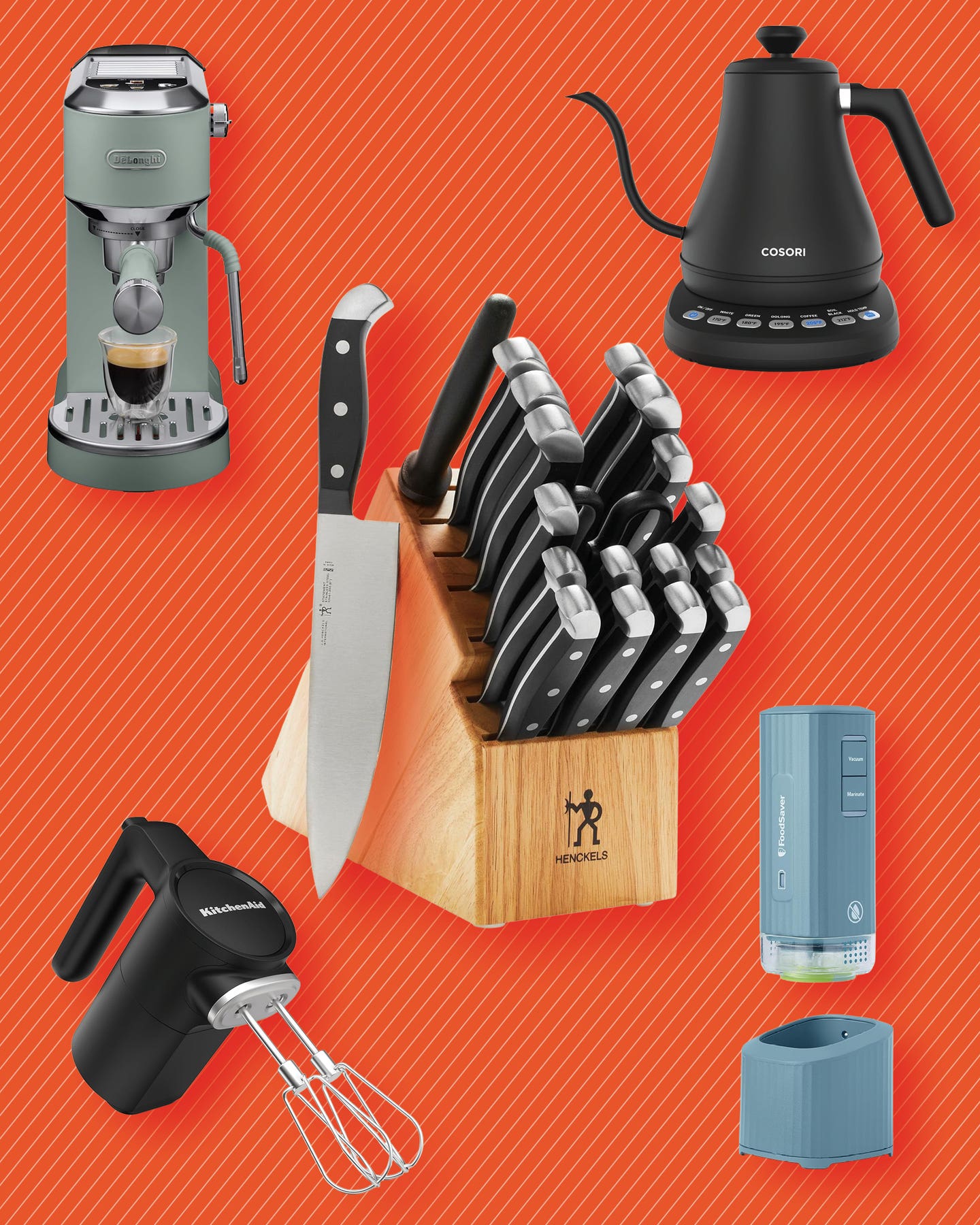The Best Canned Tomatoes Are Rich, Jammy, and Ripe for Cooking
Plus how to tell exactly what’s in your can.

Canned tomatoes are downright indispensable when the weather turns cold. They’re the foundation of countless dishes—from speedy sauces to slow-cooked braises—and they’re the next best thing to peak-summer tomatoes straight from the garden or local farm stand. Peeled and ready to use, they’re convenient and dependable, unlike the fresh yet flavorless specimens you’ll find in the grocery store in the dead of winter.
But which canned tomatoes deserve space in your pantry? Whole peeled, diced, or puréed? The San Marzanos from Italy or standard plums? And, really, what does D.O.P. (or Protected Designation of Origin) mean, anyway?
The number of options—from types to brands to packaging—can be dizzying, whether you’re in the grocery aisle or shopping online. A little knowledge goes a long way, and understanding what’s actually in the can is the best place to start.
To arm you with knowledge, we tapped two Italy-based food writers who know a thing or two on the subject: Emiko Davies, author of four (soon to be five) cookbooks on regional Italian cuisine, and Vicky Bennison, the person behind the Pasta Grannies YouTube channel and cookbook of the same name, which celebrate the stories and recipes of Italian nonne (a Pasta Grannies Book Two is underway!). We also tasted our way through numerous types and brands to find the best canned tomatoes so you can choose smartly.
- Best Overall: Bianco DiNapoli Organic Whole Peeled Tomatoes
- Best Value: 365 by Whole Foods Market Organic Whole Peeled Tomatoes
- Best Diced: SMT San Marzano Diced Tomatoes
- Best Salt- and Preservative-Free: Pomi Chopped Tomatoes
- Best D.O.P. San Marzanos: La Fede D.O.P. San Marzano with Basil
- Best Passata: Mutti Tomato Purée
- Best Cherry Tomatoes: Rega Cherry Tomatoes
- Best Tomato Paste: Mutti Double Concentrated Tomato Paste
Features to Keep in Mind
Types of Canned Tomatoes
Most canned tomatoes—regardless of type—are peeled (either by using steam or dipping them in a hot lye bath, a strong solution of sodium or potassium hydroxide that’s quick and cost-effective). Then they’re prepped, sealed, canned, and sterilized in a hot water bath, which means they’re technically cooked in the can. The difference in types comes down to how the tomatoes are handled before they enter the can. While not an exhaustive list, here are the essential types for a well-stocked pantry.
- Whole peeled: Packed in juice or purée, whole peeled tomatoes are the most versatile type, since they can be used whole, chopped, crushed, blended, and so on. Davies prefers whole peeled tomatoes since they’re in their “least processed state,” and Bennison learned from her work on Pasta Grannies that manufacturers use their best quality tomatoes for cans of whole peeled.
- Diced: The majority of diced tomatoes on the market include calcium chloride, a preservative added to retain their firmness and shape. Reach for diced when you want distinct tomato chunks in whatever you’re cooking—say, a big pot of chili or baked nachos. Diced tomatoes without calcium chloride (sometimes labeled as “chopped”) break down more readily.
- Passata: Also known as tomato purée, passata is made from tomatoes that have been briefly cooked and strained to remove the seeds and pulp, resulting in a thick, smooth texture. It’s often sold in glass jars or boxes. Tomato purée shouldn’t be confused with crushed tomatoes, which are processed to a fine texture (usually with the seeds intact) and mixed with purée.
- Cherry: Canned cherry tomatoes are harder to find in the average supermarket, but they’re worth seeking out. Usually packed unpeeled, they have a sweet, intense flavor compared to most plum varieties, and they break down quickly in sauces and soups given their compact size.
- Paste: The most concentrated form of canned tomatoes, tomato paste is essentially tomato purée cooked down to an ultra-thick paste. Depending on the brand, it’s sold in small cans and tubes and in single, double, or triple concentrated versions. Regardless of the type, a small amount goes a long way and adds an unmistakable umami boost to all kinds of dishes.
Ingredients
Plum tomatoes are the most widely used type for canning. Two well-known varieties of plums are Roma and San Marzano (more on these in a bit!). From there, common ingredients are salt, calcium chloride, and citric acid (a preservative added to maintain acidity and color). Note that calcium chloride is used by some manufacturers for whole peeled tomatoes, not just diced. Many brands include basil, oregano, garlic, and other herbs and seasonings in the can.
Region of Origin
To be a smart shopper, it pays to know where your tomatoes come from and how to read the label.
For example, there’s an important distinction between “Made in Italy” versus “100% Italian Tomatoes” on a label, Davies explains. For the first claim, tomatoes can be grown anywhere in the world and just be canned (or “made”) in Italy. The same is true for “Product of Italy” and similar lingo. When you see “100% Italian Tomatoes,” it’s a safe bet that the tomatoes were Italian grown and canned.
Label reading savvy will also serve you well when it comes to D.O.P. San Marzanos, the so-called gold standard of tomatoes (thanks to their distinct sweetness, low acidity, and small number of seeds). San Marzanos labeled as D.O.P. are certified to have been grown, processed, and canned according to strict guidelines within the Agro Sarnese-Nocerino region of the Province of Salerno in Campania, which is prized for its fertile volcanic soil and microclimate. In fact, San Marzanos get their name from the town where they were born, San Marzano sul Sarno. As a result, San Marzano is often used as shorthand to refer to the variety of tomatoes and the region itself.
Be aware, though: Increasingly, producers in the U.S., China, and all over the world are growing and canning San Marzanos to meet consumer demand. Chances are good that if you see a can labeled as “San Marzano” or “San Marzano-style” on the supermarket shelf, they’re from Italy (but grown and packaged outside the Campania region) or elsewhere. To ensure you’re getting a real-deal can of D.O.P. Marzanos, look for the red-and-yellow D.O.P. seal—the certifying body (consorzio) seal—and a certification number on the can. Also, they must be packed whole or in halves and only in cans, so if you see different types (diced, crushed, passata) or packaging, it’s a sure fake.
Packaging
While aluminum cans are the mainstay, tomatoes packaged in boxes (or cartons) and glass jars have become more ubiquitous in recent years, a change largely due to toxicity concerns about BPA (or Bisphenol-A), a chemical used in can linings. Now, many cans have “BPA-free liner” printed on the label, or “no BPA intentionally added.” Boxed tomatoes rely on aseptic packaging, commonly using a brand called Tetra Pak. Lightweight and shelf stable, Tetra Pak bills itself as more environmentally sustainable than cans and uses a sterilization process that requires few to no preservatives.
Shelf Life
The shelf life of canned, boxed, and jarred tomatoes is relatively similar—about 18 to 24 months if stored in a cool and dry place. Always avoid cans with dents, swelling, or rust, and boxes that are bloated (big no-nos from a food safety standpoint). Before buying, check the expiration dates to make sure they have plenty of shelf life left.
Can you eat those expired tomatoes that got pushed to the back of your pantry? Most likely yes, but inspect them first to make sure there’s no mold or odor. Just know that the nutritional value, flavors, and aromas degrade over time, so it’s best to not let them collect too much dust.
Our Top Picks
Best Overall: Bianco DiNapoli Organic Whole Peeled Tomatoes
Best Overall
Chefs have heaped praise on these whole peeled tomatoes, and for good reason. With their long, oblong shape, ripe-jammy texture, and deep red color, they’re remarkably rich and well balanced in sweetness and acidity, so much so that they’re good enough to eat straight from the can. While you won’t find the tomato variety listed on the can—the quality speaks for itself—these plums are organically grown and harvested in Yolo County in Northern California, adapted from San Marzanos for the unique growing conditions of the area. Ingredients: Organic Tomatoes, Sea Salt, Organic Basil
Best Value
At about $2.30 for a 28-ounce can, these organic, whole peeled tomatoes are more affordable than Bianco DiNapoli (which range from $4 to $7) and consistently high in quality, making them the best bang for your buck. They’re uniformly ripe with a sweet, bright flavor, and their semi-firm flesh breaks down nicely in sauces and stews. Ingredients: Organic Tomatoes, Organic Tomato Juice, Sea Salt, Calcium Chloride, Citric Acid
Best Diced: SMT San Marzano Diced Tomatoes
Best Diced
This brand of diced tomatoes is a good option when you want distinct tomato chunks in your finished dish. They have a few standout qualities: the tomato pieces are pleasantly firm without being hard or crunchy, uniform in size, and rich in flavor. Don’t let the San Marzano labeling trick you into thinking that they hail from Italy, though. As noted in small print near the bottom of the can, they’re “grown and packed in U.S.A.” Ingredients: Diced Tomatoes, Tomato Juice, Salt, Calcium Chloride, Citric Acid
Best Salt- and Preservative-Free: Pomi Chopped Tomatoes
Best Salt- and Preservative-Free
The Parma, Italy-based brand Pomi makes the origins of its tomatoes clear: “From 100% Fresh Italian Tomatoes” is printed on every product. Packaged in Tetra-Pak cartons, the chopped tomatoes have a ripe tomato flavor that leans more savory than sweet. With no salt or calcium chloride added, they quickly meld into whatever you’re cooking and are a great option when you want the convenience, but not the firm texture, of diced tomatoes. Ingredients: Tomatoes
Best D.O.P. San Marzanos: La Fede D.O.P. San Marzano with Basil
Best D.O.P. San Marzanos
The D.O.P. San Marzanos from La Fede are just what they should be: deep red in color with a bright sweetness, rich flavor, and semi-firm flesh that breaks down beautifully in sauces and braises. They’re relatively easy to source in the U.S., and a great choice if you want to try a D.O.P.-certified can for your next batch of bolognese. Ingredients: Whole Peeled Tomatoes, Tomato Puree, Basil Leaf
Best Passata: Mutti Tomato Purée
Best Passata
Based in Parma, Italy, Mutti consistently delivers quality products (it’s one of Bennison’s go-to brands), and their tomato puree (passata) is no exception. Packaged in tall glass jars with a screw top lid, it has a silky-smooth texture and a sweet-tangy finish. Plus, the glass jars are handy for storing any unused passata in the fridge. Ingredients: Tomatoes, Mediterranean Sea Salt
Best Canned Cherry Tomatoes: Rega Cherry Tomatoes
Best Canned Cherry Tomatoes
Ultra sweet, ripe, and juicy, these canned cherry tomatoes from Rega, located in the Puglia area of Italy, taste of sunshine and summer days. A beautiful deep red in color, they cook up quickly and evenly, and their thin peels lend a pleasing texture to sauces and soups. Ingredients: Cherry Tomatoes, Tomato Juice
Best Tomato Paste: Mutti Double Concentrated Tomato Paste
Best Tomato Paste
It’s no surprise that our favorite tomato paste is from the same brand as our favorite passata—Mutti. Their double concentrated paste, sold in both cans and tubes, has a super rich, robust taste with none of the “tinny” flavors that befall many canned varieties. Ingredients: Tomatoes, Mediterranean Sea Salt
Ask the Experts
Q: Do you turn to different types based on what you're making?
Bennison notes that she uses “cherry tomatoes for a quick sauce, and the plum ones for a braise.” Davies turns to passata for pizza and ragus, and whole peeled tomatoes for “stews, braises like peperonata, soups, and basically anywhere where I want a chunkier sauce.” Davies and Bennison also keep tomato paste in their fridges to add rich complexity to dishes, which both have learned how to make from scratch in the old Sicilian tradition: from tomatoes and the Italian sun (color us envious).
Q: Do you use D.O.P. as a marker of quality?
Davies likes supporting D.O.P. and other Italian certifications not only because they're a marker of quality, but “because they support heirloom varieties and a sense of place/terroir that might otherwise be ignored or undervalued (or disappear altogether).”
Bennison notes that while D.O.P. primarily tells you about the geographical origin, cans with this certification are more likely to be “quality products.”
Bennison’s simple advice: “In the end, let your taste buds be the guide.”
Our Take
The canned tomato aisle can easily overwhelm, but the number of options is a very good thing. Quality products await us—no matter what recipe or red sauce moment you’re dreaming about. The best products consistently deliver on aroma, flavor, and texture.
If you’re short on space, opt for whole peeled tomatoes. They’re an all-around winner in terms of quality and versatility. Other types—from diced to passata to paste—are clutch players when you’re short on time, making them worthy additions to your pantry.
Lastly, it pays to know what’s in the can (or box or jar!) so there are no surprises. Quickly scan labels for ingredients, expiration dates, and clues about the tomatoes’ origins to confidently fill your cart. Above all, start cooking and taste, taste, taste until you find the best products for you.
Keep Reading
Continue to Next Story
